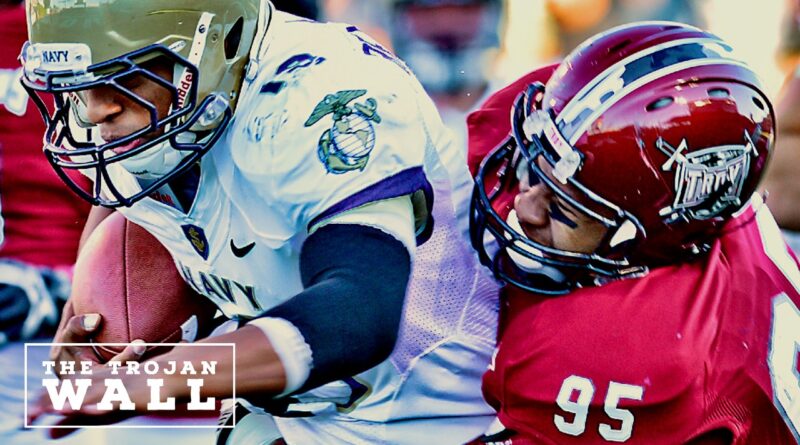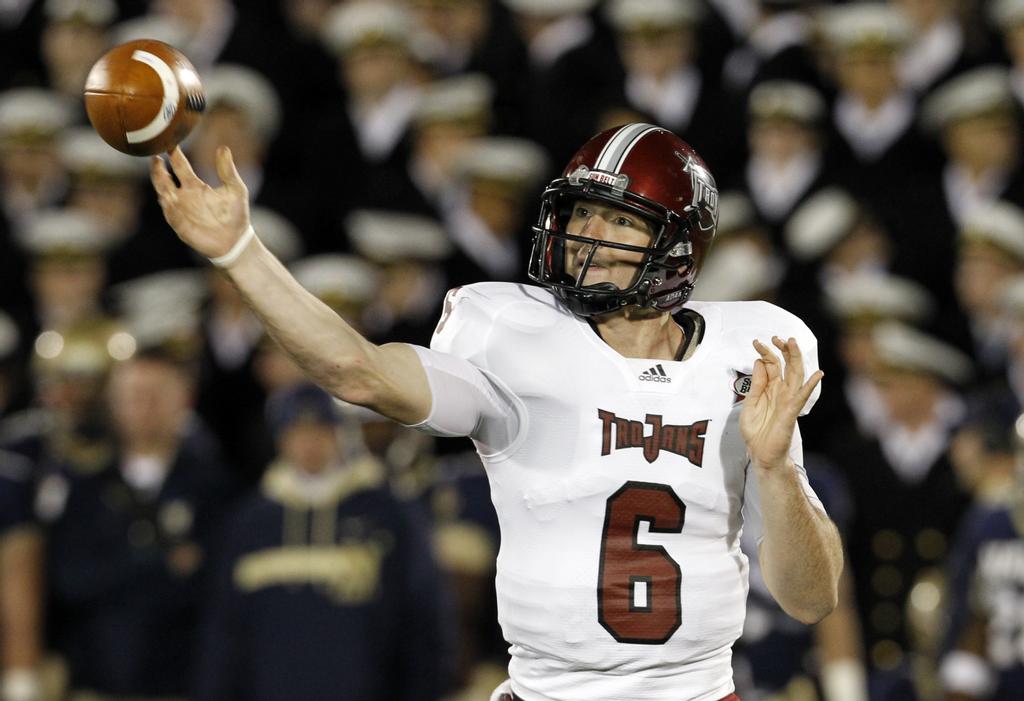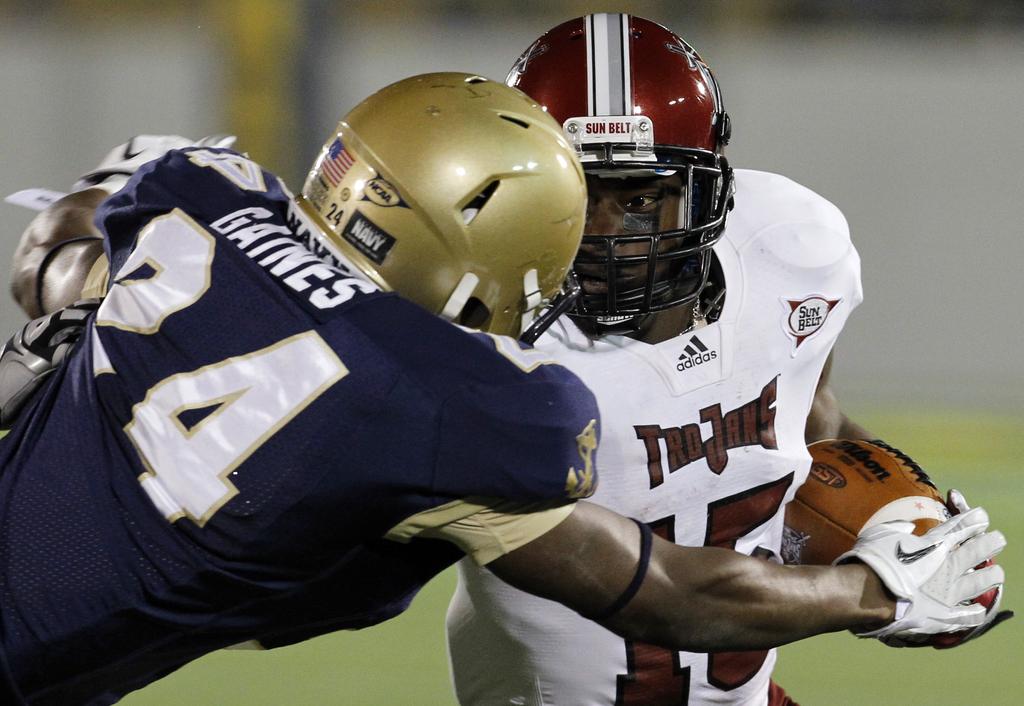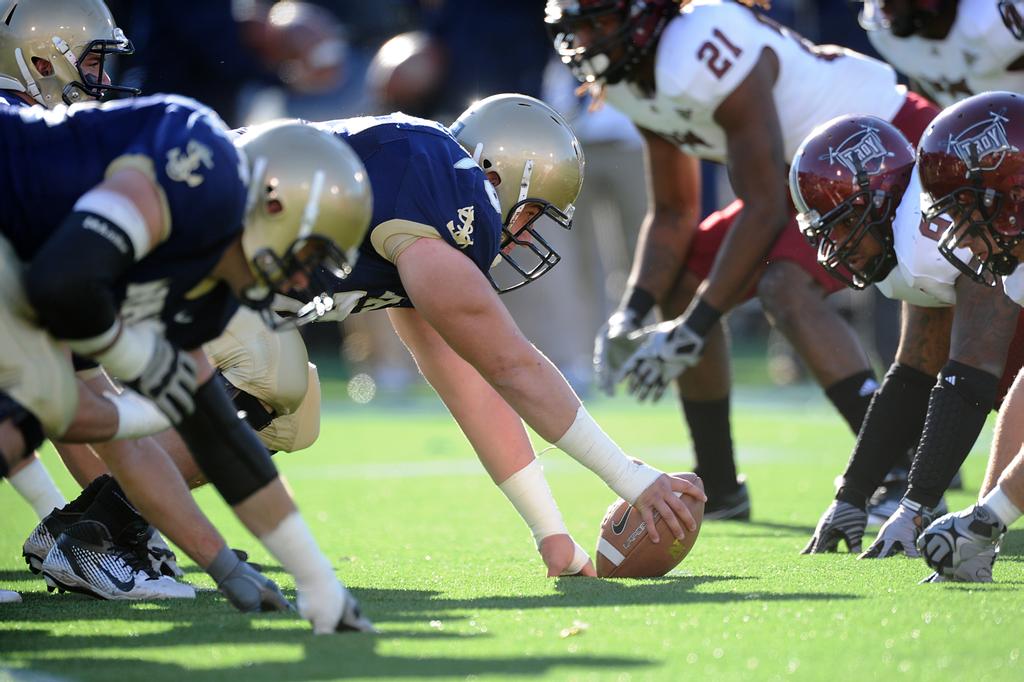Trojan War: Troy’s History against Military Academies
This article was originally written before the 2022 Troy-Army game. It has been updated to reflect the 2023 matchup.
When Troy goes to West Point Saturday, it will be the Trojans’ first game in New York, the second against Army and the fourth against either of the two major military academies.
The game is part of a six-game series over the next 12 years, so Army will be a regular opponent in the near future.
It’s fitting. Historically, military academies are a part of Troy’s pre- and postwar football legacy.
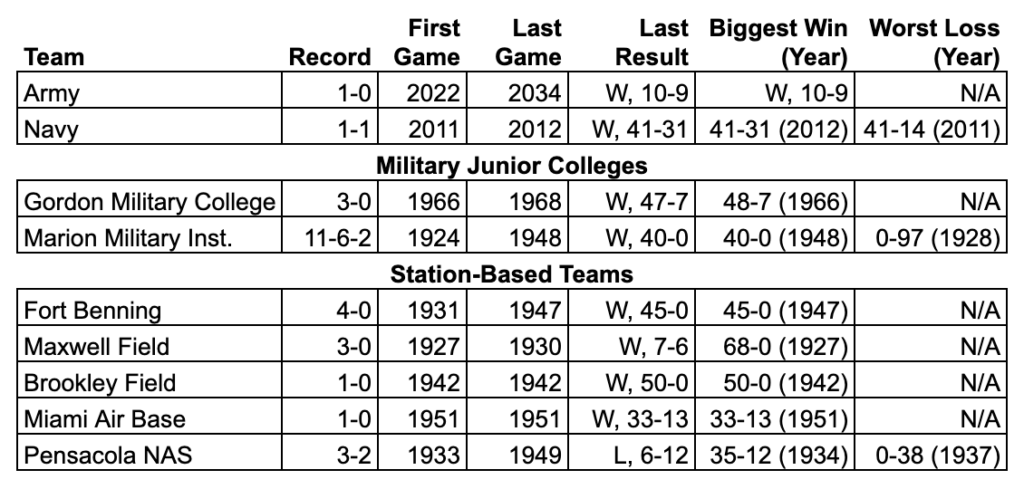
Before the Trojans joined the Alabama Intercollegiate Conference and the NAIA, Troy’s schedule was a mixture of high schools, small colleges and military organizations, whether it was Fort Benning, Brookley Field or Miami Air Base.
In fact, Troy’s first game against Marion Military Institute nearly 100 years ago kicked off a quarter-century of unique matchups.
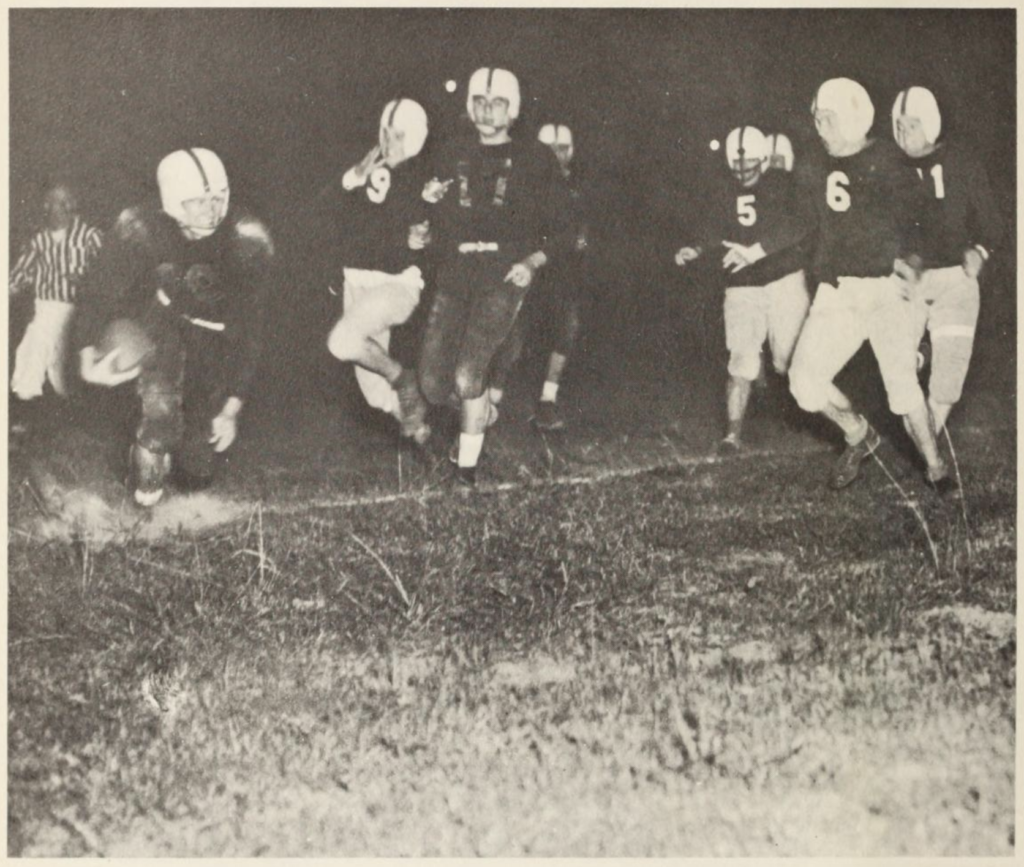

Early Era Matchups (1924 – 1951)
In 1924, the Trojans traveled two hours up the road to play Marion and tied 0-0. The two teams played 19 matchups in the span of 24 years, but the Tigers’ aid in establishing the AIC makes this less surprising.
MMI is an outlier compared to the other military schools that played Troy. The sheer number of times they played makes Marion an ancient rival, with the likes of Jacksonville State, Livingston/West Alabama, Howard/Samford and Florence/North Alabama.
Despite the facts that
- Troy hasn’t played them since 1948
- Marion is now a junior college
- I have no idea when the football team disbanded
They are tied with ULM for No. 11 all-time in most games against Troy.
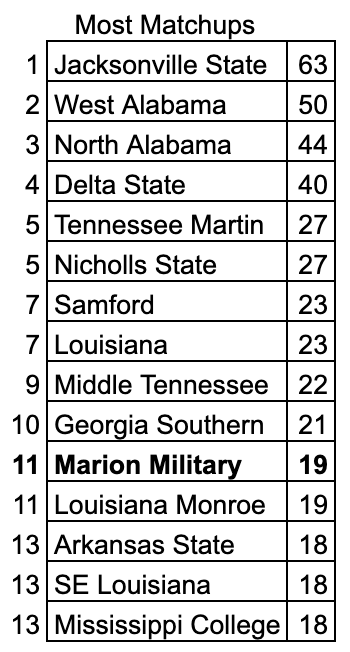
The Trojans began the series in an 0-5-2 rut, losing by a combined score of 251-6, and feeling the two worst losses in program history in 1928 (0-97) and 1925 (0-86).
Troy turned the series around after another 0-0 tie in 1932, going 11-1 against the Tigers through 1948.
In the 1930s, Troy began playing even more games against teams from military bases. Teams from Maxwell Field, Pensacola NAS and Fort Benning all traveled to or hosted Troy.
With the exception of two losses to NAS in 1937 and 1949, the Trojans won these games pretty handily. The Trojans outscored Maxwell Field 88-6 in three games.
Troy outscored Fort Benning and Brookley Field 155-19 in just five games. In 1942, Troy played both teams and Marion twice, outscoring all three 122-34 in four games.
Pensacola NAS was the last local base to play Troy, in 1949. Two years later the most interesting opponent came to Troy: Miami Air Base.
Newspaper clippings at the time refer to it as “Miami Naval Air Station” and “Miami Air Force” but after further digging I’m certain it’s NAS Miami, which is now Coast Guard Air Station Miami.
Regardless, the team came in as heavy favorites, having blasted the University of Havana 44-6. Troy’s modern counterparts would be proud of the defensive play.
Troy held Miami to 42 yards on the ground, but halfback John Gilbert set a then-record by going 24-for-34 passing for 297 yards. The Trojans held the “Packets” to just two garbage time touchdowns, winning 33-13.
It had been two years since Troy played Pensacola NAS, and three since Marion came to town. Troy began moving upward, as the AIC moved into the NAIA, and after the war, military-based teams began to disappear.
Miami Air Base would be Troy’s last military opponent for 15 years.
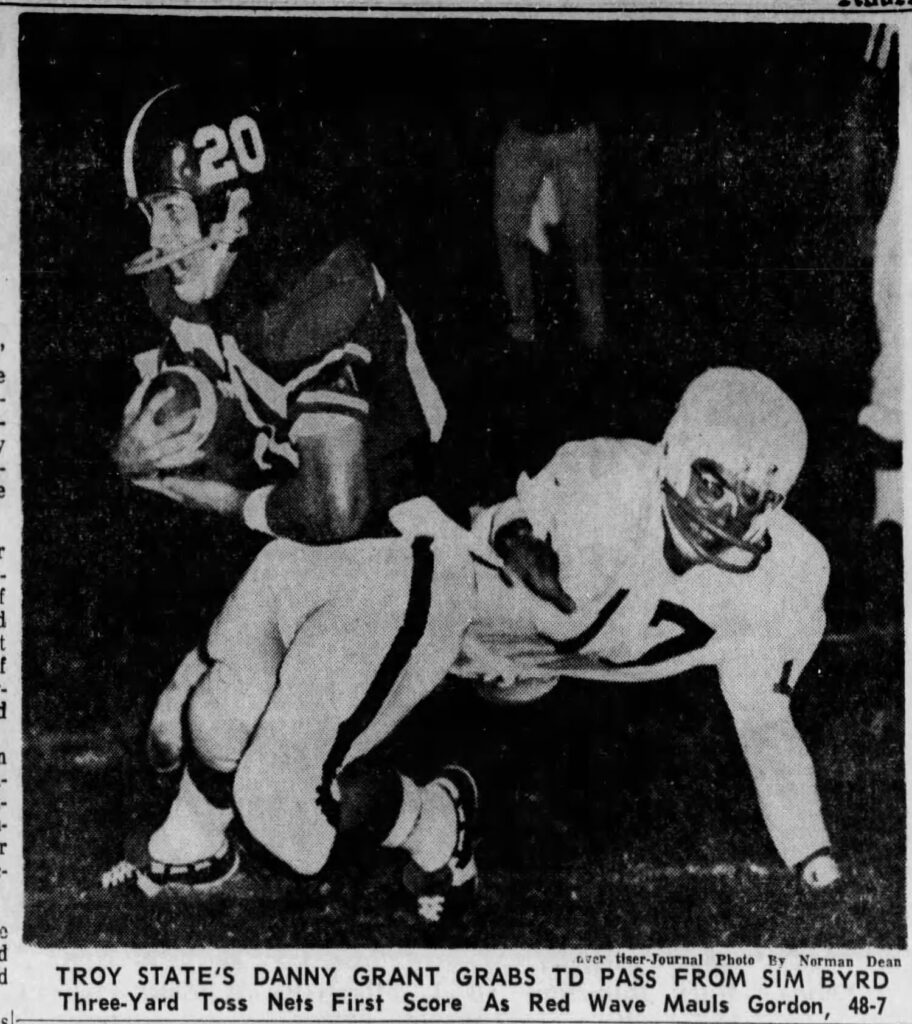
The Gordon Military College Series (1966-1968)
One program that seemingly slipped through the cracks was Gordon Military College, now known as Gordon State College. In 1916 the US Department of War made Gordon a military junior college, much like Marion or the New Mexico Military Institute.
That academic backing proved to be the difference, as station-based teams fell to the wayside. The next evolution of college football was complete.
When Billy Atkins took over the program in 1966, the Trojans too began a new era of football.
William Clipson, the previous coach, had one winning season in eleven years. The other ten seasons each had ten wins or fewer.
Atkins made Troy a winning program in two seasons, and it all started against Gordon Military College. In his first game as head coach, Troy smothered Gordon 48-7.
Imagine almost going 15 years without scoring 40 points, then in your coach’s first game, dropping almost 50. That’s what happened.
While Troy hung 38 on West Alabama in 1962, the Trojans hadn’t scored 40 points since 1952. You have to go back another decade to get the next highest-scoring game: The 50-point beatdown against Brookley Field.
If ever there was a sign Troy was turning the page, it was Troy’s destruction of Gordon.
The next season, Troy went up to Georgia, and while the result was the same, the scale wasn’t. Troy State won 17-0, went 8-2 and won its first conference championship in 25 years.
Then came The Year of Champions.



Troy’s NAIA title run began by outscoring its first three opponents 138-61. That includes a 47-7 romp over Gordon College.
We covered the game in the article above, but the short version is Troy racked up 460 yards of offense and nabbed its first few votes in the national poll.
Since winning that title, Troy began its transition from NAIA to NCAA Division II, and later Division I and FBS. The Trojans left junior colleges and other small schools by the wayside, and in 2001 a new realm of possibilities opened up.
Troy was on the same level as the legendary West Point and Annapolis programs.


The Modern Series (2011-2034)
In the middle of its Sun Belt title run, Troy added a flurry of new non-conference opponents, from hosting Mississippi State to playing Ohio State in the Horseshoe.
In 2009, Navy was added to the list. The Trojans set up the Midshipmen as part of a home-and-home in 2011 and 2012.
The first of the two games did not go well for Troy.
Navy dropped 28 points in the second quarter.
The final score was 42-14. It wasn’t the biggest blowout Troy faced that season, but it was a clear sign of the program’s state under Coach Blakeney, one year after winning the fifth conference title.
The next season felt like Troy could turn it around though, and the Trojans’ game against Navy gave the fanbase some hope.
After all, Troy was technically hosting College GameDay.
Navy again dropped 21 points in the second quarter, but this time Troy held the halftime lead, 28-21. Troy held off Navy in the second half, winning 41-31 on the Marines’ 237th anniversary.
A decade later, the Army series was announced last year. The first game landed in the middle of Jon Sumrall’s first season and Troy’s 11-win run.
Not only was it Troy’s first appearance on the NFL Network, it was the first sellout game at the Vet ever. 31,010 people came to watch this historic game.
Army struck first on the first play of the second quarter, and added a field goal to their lead just before halftime. As the 2022 Trojans were known to do, the home team came back in the second half, taking a 10-9 lead late in the fourth quarter.
The Knights set up a game-winning field goal with 15 seconds left, but pushed it wide right, sealing the Troy victory.
Despite the dramatic outcome and the record attendance, the game will be most known for one single play: Carlton Martial’s record-breaking tackle. Martial took down Tyson Riley in the third quarter, the 546th of his career.
That broke the previous FBS record for career tackles, etching Martial’s name in Troy history books forever.
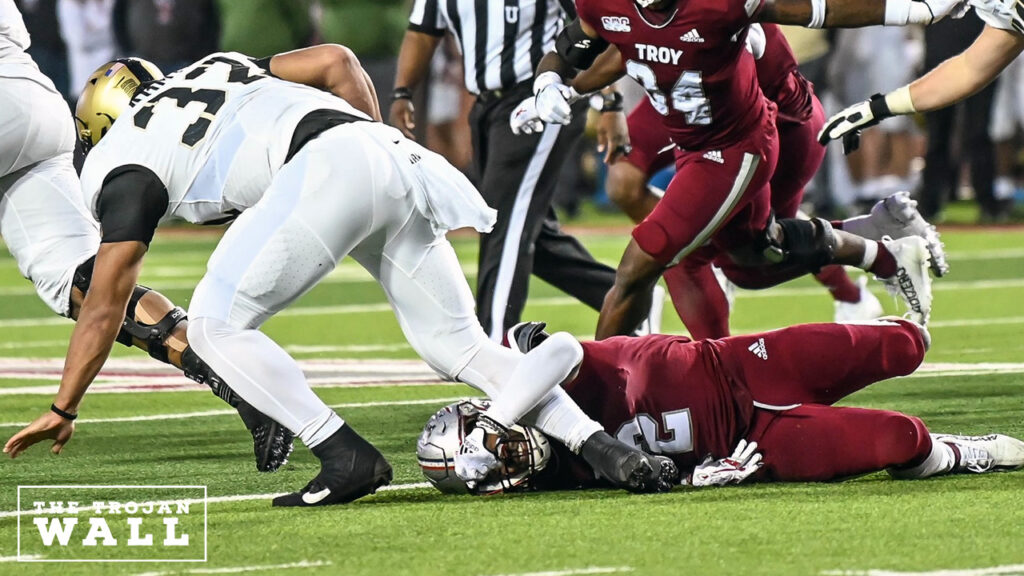
It’s a long book, full of championships and victories, but the early chapters are littered with games against smaller military organizations.
Troy’s deep history with other military academies comes pushes forward Saturday, from playing the military junior college up the road to visiting West Point for the first time.
All-Time Records




